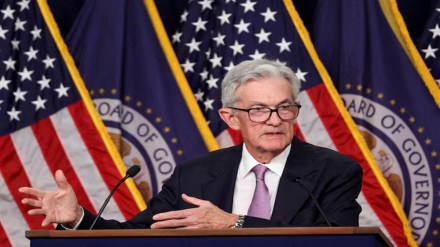US Federal Reserve Chair Jerome Powell is likely to announce a rate cut today amid US government shutdown. The two-day Federal Open Market Committee (FOMC) meeting is underway on October 28-29, and the final decision of the Fed members will be announced by Powell on October 29 at 2 pm ET. followed by a press conference at 2.30 pm ET. The live streaming of the FOMC meeting can be watched on the YouTube channel of the US Fed.
In September, Powell announced the central bank’s first interest rate cut of 2025, indicating increasing concern about a significant slowdown in the labor market. He noted that in this less dynamic and somewhat softer labor market, the employment risks appear to have risen.
The US Fed is expected to continue with another rate cut of 25bps in today’s FOMC meeting to put the policy rate in the 3.75%-4.00% range, followed by another in the FOMC meeting on December 9-10.
“The Fed is widely expected to hold interest rates steady in its upcoming meeting. However, investors are now focusing on Chair Jerome Powell’s tone and the broader FOMC statement for clues about the policy trajectory ahead. With the quantitative tightening (QT) program nearing its final phase, markets are increasingly anticipating a shift toward a neutral or even easing stance sometime in 2026. Still, the 10-year U.S. Treasury yield hovering around 4.3% signals that financial conditions remain relatively tight,” says Linh Tran, Market Analyst at XS.com
Therefore, the Powell press conference will become a key event to watch. All eyes will be on Powell, as he is expected to either decisively indicate a rate cut in December or steer away from that decision.
Nigel Green, CEO of global financial advisory giant deVere Group says, “We expect that the Fed will want evidence, not instinct, before easing again. We think the next reduction might not come until the second quarter of 2026, possibly later. Investors should prepare for a pause that lasts longer than many have already priced-in.”
“Despite the expectation of a cut, the Fed is signalling caution: it consistently emphasizes ‘meeting-by-meeting’ data dependence, and some officials remain wary about cutting too fast given inflation risks.
Market expectations are very high for the cut and for multiple cuts this year; if the Fed disappoints, by cutting less or signalling fewer cuts, markets could react negatively in equities, bonds, risk assets,” says Jigar Trivedi, Senior Research Analyst at Reliance Securities.
US Inflation and Job Market Data
The US Fed heavily monitors US inflation and job market data sets for determining monetary policy. But this time, the US Fed faces roadblocks. The US government shutdown has resulted in numerous economic and other reports remaining unpublished, which in turn has hindered the US Federal Reserve’s ability to make informed decisions due to the absence of this crucial data.
The unemployment rate, last estimated, was at 4.3% in August and Fed officials have shown concern about rising unemployment. The US CPI data for September was, however, released after a delay on October 24. US inflation came in lower than expected, and the core CPI has also increased less than expected.
The annual inflation rate in the US rose to 3% in September 2025, the highest since January, from 2.9% in August and below forecasts of 3.1%. The all items less food and energy index or the core index, also rose 3.0 percent over the last 12 months.
Currently, the US economy is experiencing a unique challenge characterized by sticky inflation and a falling job market. Within the Fed, there are differing viewpoints: some officials support further interest rate cuts in the near term, while others believe that inflation poses a more significant threat and advocate for maintaining higher interest rates for an extended period.
“The rate cut itself is unlikely to move the market’s needle much, as it will not be new information. However, the central bank’s communication regarding the future of policy easing or the mention of winding down QT could elevate market volatility. Speculation has grown concerning the end of QT following comments from Fed Chair Powell a few weeks ago,” says Aaron Hill, Chief Analyst at FP Markets.
